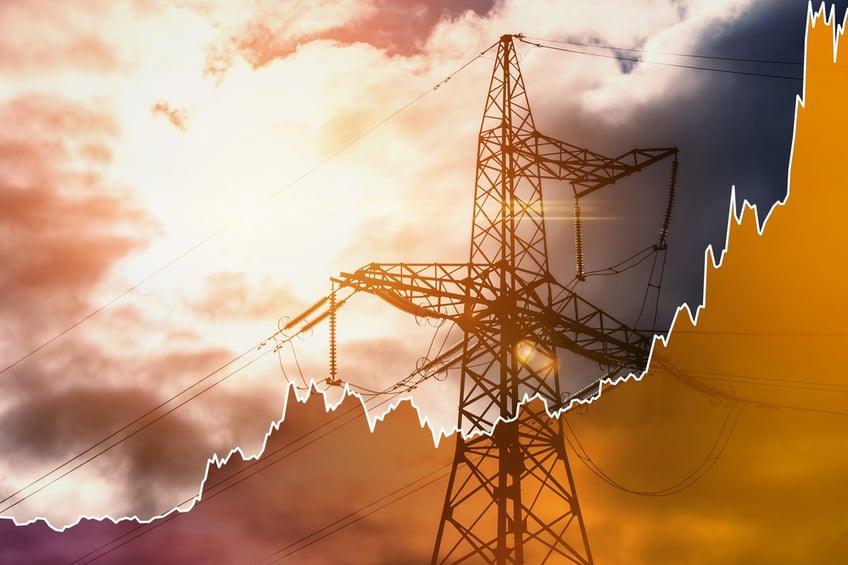How Did Electrical energy and Gasoline Costs Behave in 2022?
High inflation was one of the main challenges for the energy sector and the global economy in general during 2022. Early in January 2023, the US Energy Information Administration published two articles analyzing the behavior of electricity and gas prices during the previous year. Here we will discuss some of their main findings.
Get an ASHRAE Level 2 Energy Audit for your building and cur your electricity and gas bills.
Wholesale natural gas prices reached their highest point since 2008, and this can be attributed in great part to declining domestic production and high LNG demand from Europe. Since natural gas is the largest electricity source in the US, kilowatt-hour prices were also volatile across the country. Extreme weather events led to peak prices at major trading hubs, and a shortage of coal left power generators with limited options.
US Natural Gas Prices in 2022

According to the US EIA, the average Henry Hub natural gas price was $6.45 per MMBtu in 2022. This represents a 53% increase from 2021, and the highest value reported since 2008. Natural gas prices were also highly volatile in 2022: although the average value was $6.45/MMBtu, daily spot prices ranged from $3.46/ MMBtu to $9.85 per MMBtu.
- The minimum value ($3.46/MMBtu) was reported on November 9.
- The maximum value ($9.85/MMBtu) was reported on August 22.
Keep in mind these are average natural gas prices for the US, but spot prices reached much higher values in some trading hubs. In California, the SoCal Citygate price reached $49.67/MMBtu on December 13, and the PG&E Citygate price reached $57.07/MMBtu on December 21. This was caused by a combination of below-average winter temperatures and pipeline constraints.
The EIA has identified several factors that contributed to price volatility in the wholesale natural gas market:
- Declining natural gas production in the US
- Major withdrawals from natural gas storage facilities
- High LNG demand from Europe
- Local consumption peaks due to extreme weather events
Natural gas prices tend to peak with both extreme heat and extreme cold. Buildings require more air conditioning when temperatures rise, power generators must ramp up their production, and demand for natural gas increases. On the other hand, extreme cold forces homes and businesses to use their furnaces and boilers at full capacity, and most of them depend on natural gas combustion.
US Electricity Prices in 2022

Since natural gas generates around 40% of US electricity, kilowatt-hour prices were also volatile across the country in 2022. At different times of the year, there were price peaks in response to extreme heat or extreme cold. Power generators were also affected by a shortage of coal, which has been their main alternative when natural gas is affected by price volatility or supply issues.
Between 2021 and 2022, average electricity prices increased in all major trading hubs except for ERCOT (Texas). The US EIA reported drastic MWh price peaks in four key markets throughout the year:
- ISO-New England reached $160/MWh in January 2022, due to a combination of pipeline constraints and a harsh winter storm.
- ERCOT North (Texas) reached $182/MWh in July 2022, when the state was dealing with below-average wind generation during a heatwave.
- Northwest-Mid Columbia reached $224/MWh and CAISO-California reached $134/MWh during a heatwave in September 2022.
- These same markets had another price peak in December 2022 due to a winter storm. Northwest-Mid Columbia reached $283/MWh and CAISO-California reached $257/MWh.
Electricity and natural gas prices have been volatile in many US regions. While this increases the operating cost of the building sector, it also improves the business case for energy retrofit projects and on-site solar power. As energy prices increase, the ROI of these projects improves and their payback period is shortened.
2023 is an excellent chance to install a commercial solar power system. Thanks to the Inflation Reduction Act, you can now write off 30% of project costs as a federal tax credit. This benefit is available for homes and businesses alike, and commercial solar power gets an additional incentive: accelerated five-year depreciation under the MACRS (Modified Accelerated Cost Recovery System).
Depending on where your building is located, energy efficiency retrofits and commercial solar systems may qualify for local incentive programs. These can be combined with the federal tax credit and MACRS, achieving an even higher ROI.

Comments are closed.